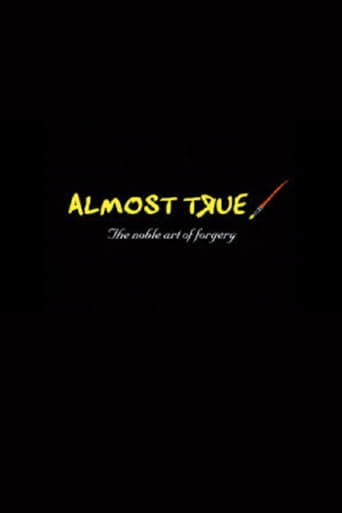gavin6942
Elmyr de Hory (born Hoffmann Elemér Albert), is such an intriguing figure. One can focus on his alleged crimes, selling forgeries for far too much, and possibly even getting his fakes into art collections and museums throughout the world. Or, there is another way to look at him.Early in this film, he says something to the effect of: "Picasso would sell this for $15,000 to $20,000; I would sell it for less." Whether intentional or not, this raises a good question: why does art have value? If one person can make a painting identical to the original, why is the original worth so much when they exhibit the same image, the same style? This film features an interview with Clifford Irving, who is a bit of a legend. That the two swindlers became friends is so appropriate. A documentary most likely exists on Irving, as well, and these two back to back could make a great double feature.And, of course, we are left to wonder how many of his claims are fake themselves? Perhaps the sales he claimed to make never truly happened...
Brian Camp
"Almost True: The Noble Art of Forgery" (1997) is a 52-minute documentary produced for the Norwegian Film Institute which takes a look back at Elmyr de Hory, a painter who became famous for his ability to forge paintings and drawings by many of the great masters of the late 19th and early 20th centuries (Picasso, Van Gogh, Matisse, Modigliani, Degas, etc.). He was the subject of the book, "Fake!," by Clifford Irving (who became infamous for writing a fake autobiography of Howard Hughes) and both he and Irving were subjects of Orson Welles' documentary, "F for Fake." I never would have seen or even heard of "Almost True" if it hadn't been included as an extra on the Criterion Collection 2-disc DVD edition of "F for Fake." "Almost True" follows up with interviews with several people who were featured or seen in the earlier film, including Mr. Irving; Guilemette Joris, a close female friend of de Hory's in Ibiza, Spain; and Mark Forgy, de Hory's friend, roommate and sometime bodyguard, as well as people not seen in the earlier film including Anthony Hugo, an Englishman (and Bob Hoskins lookalike) who acted as a middleman between de Hory's partners and various art galleries in England; Sandy Pratt, an Englishman who ran a bar in Ibiza and played host to de Hory and his circle; and actress Ursula Andress, who was a friend of de Hory's. Much of the older footage used here was also used in "F for Fake" and originated with director Francois Reichenbach, whose abortive documentary on de Hory was, in essence, finished by Welles in his own inimitable fashion. The filmmakers begin their effort here by trying to determine if de Hory's claims of having sold fakes to various world-class museums is true. As it turns out, most museums won't even discuss de Hory with the filmmakers. Only one, in fact, does confirm such a purchase and, after that sequence, the filmmakers drop the subject and move on to an investigation of de Hory's account of his own past, traveling to Budapest to determine if de Hory had any trace of the aristocratic background he claimed. They don't find a lot, but the trip does yield enough interesting details to make it worthwhile.Afterwards, the film follows de Hory's documented world travels, from Budapest to Paris, Paris to Rio, Rio to New York and then a long trip across the U.S. before he eventually settles on the island of Ibiza, Spain, where much of the film was shot and where most of the interviewees still live. Eventually, the filmmakers focus on a color catalog of de Hory's fakes that was published in conjunction with an exhibition in Tokyo in 1994 and ask de Hory's friends to look it over and comment. A few of them are skeptical that de Hory was responsible for all of them, but the film pretty much ends abruptly after these observations. I would have liked some more investigation of this.Mr. de Hory died in 1976, after "F for Fake" was released, apparently with a self-administered overdose of sleeping pills prior to his impending extradition to France to face charges of forgery. In this film, Clifford Irving suggests that his death might have been faked. Mark Forgy laughs at this notion and describes how de Hory died in his arms. Forgy, a tall blond American with a lilting voice and a gentle way of speaking (and could easily have been a movie actor had he wanted), appears to have genuinely cared for and about de Hory and emerges as the most engaging and sympathetic figure in the film.Curiously, neither the narration nor the interviews ever once mention "F for Fake" or Orson Welles. The end credits only acknowledge the film clips used as "Footage from BBC/Elmyr: The True Picture/Director Francois Reichenbach." I have no idea why this is the case. Certainly few viewers would come to this film without first having seen "F for Fake." I find the subjects of both of these films to be quite fascinating and I did indeed read Clifford Irving's book on de Hory many years ago. This film, however, raises more questions than it answers and leaves us hungry for more. Alas, it's quite possible that all the answers died with de Hory. Or disappeared with him, if Irving's theory has any weight.
